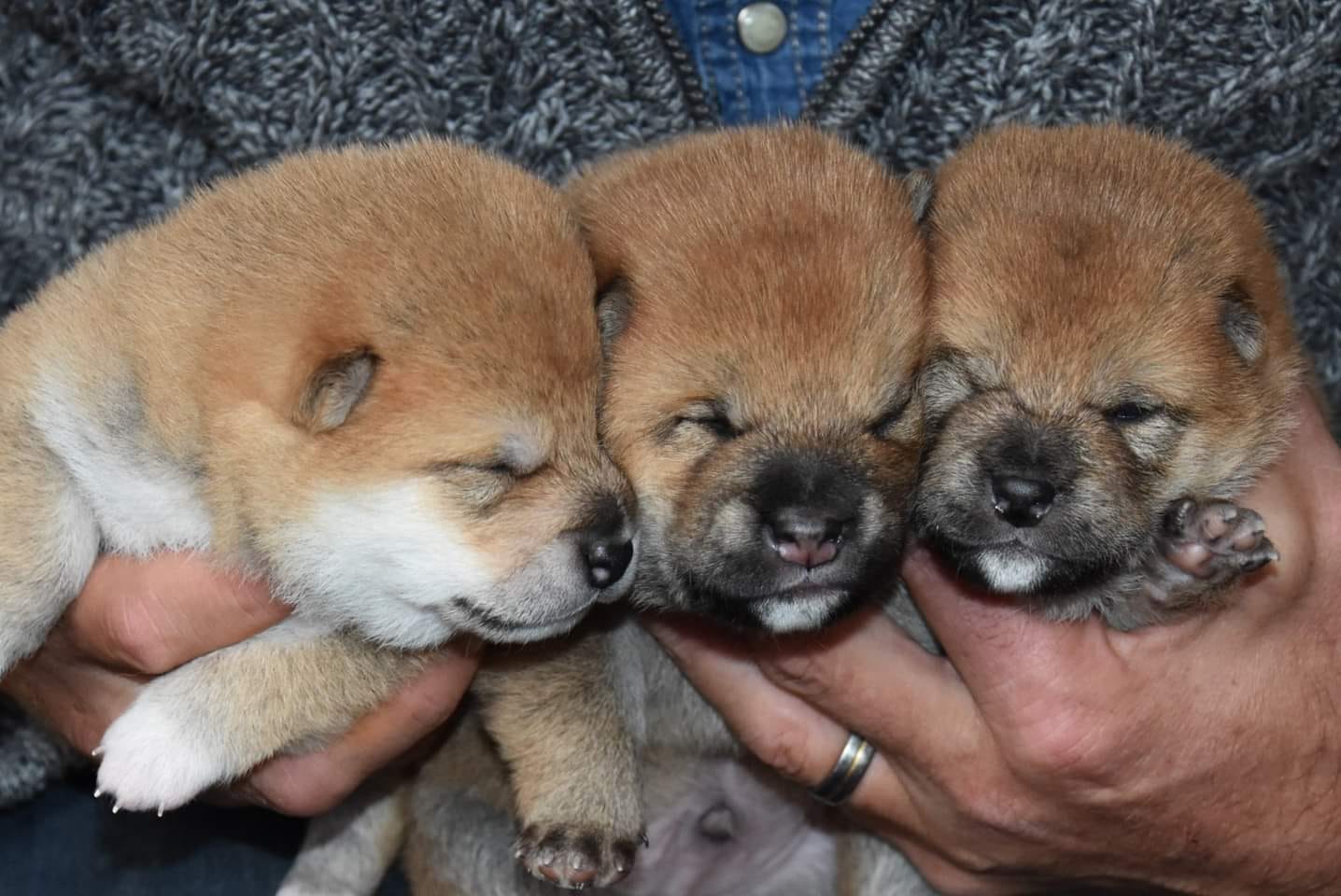
Shiba Inu – test breedings
Shiba Inus – a demonstration of our breed management software!
This week the Shiba Inu breeders have been given a free trial to our software. In order to help them understand how to use their results, we made a test breeding video to walk them through our website. You can watch this below!
A Written Test Breeding
This second test breeding will be all written for those who might prefer to read rather than listen (or English may not be your first language).
The Parents
Obviously, selection for breeding mates involves more than genetic diversity. We also want the type, temperament, drive, pedigree, etc. in our resultant puppies, just as we always have before.
This is the sire. Let’s look at the key points:
The DLA: He is homozygous in the DLA for one of the common haplotypes in the Shiba breed. 1054/2106 is the most common DLA haplotype in this breed.
According to UC Davis, “The frequencies of the 1054 (40.7%), 1091 (22.2%) class I haplotypes, and 2018(19.8%), 2067 (21.0%) and 2106 (42%) class II haplotypes were disproportionately high, occurring in over 60% of the dogs tested.” All the rest of the DLA haplotypes are less well represented. So, when all else is equal in a breeding, I might opt for a mate with the less well represented haplotypes in order to preserve them in the breed. Once haplotypes disappear from a breed, they can only be restored by an outcross to another breed.
Outlier Index (OI): His OI is above breed average. As this number drops, breeders are breeding toward a genetic bottleneck, which is when the genes of a few ancestors become very common in the majority of a population. The OI of this breed is at a good level, so breeders with individual dogs that have lower than breed average OI can easily raise them in their puppies by looking for mates with higher OI.
Average Genetic Relatedness (AGR): I fondly call this the “more breeding mates” measurement. If you select for a lower AGR, you will have more unrelated options for your potential breedings. This tells us how closely a dog is related to other dogs in our database. The higher it is, the more dogs he is related to. He has an AGR of -.05, which is slightly lower than breed average. This means he is less related to dogs in the database than the typical Shiba in the database. This number will change as more Shibas are uploaded to the database.
Internal Relatedness (IR): And finally, the inbreeding estimate. He has a slightly below average IR value, meaning he is slightly more outbred than the average Shiba. A high inbreeding measurement would be above .15, according to Dr. Pedersen.
This is the dam. Let’s look at the key points:
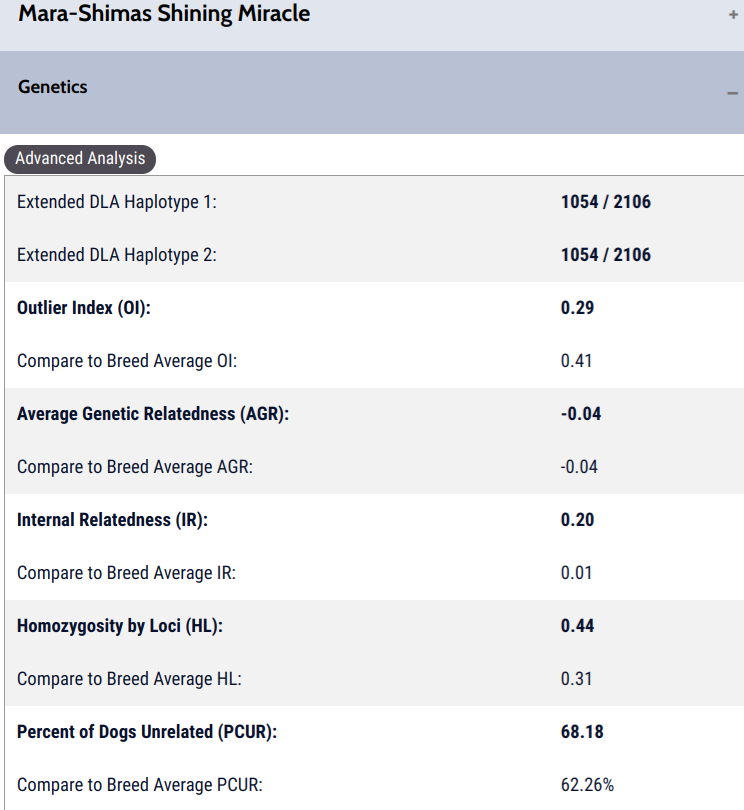 The DLA: Similar to the sire, she is homozygous for the most common DLA haplotype in the Shiba population, 1054/2106.
The DLA: Similar to the sire, she is homozygous for the most common DLA haplotype in the Shiba population, 1054/2106.
According to UC Davis, “The frequencies of the 1054 (40.7%), 1091 (22.2%) class I haplotypes, and 2018(19.8%), 2067 (21.0%) and 2106 (42%) class II haplotypes were disproportionately high, occurring in over 60% of the dogs tested.” All the rest of the DLA haplotypes are less well represented. So, when all else is equal in a breeding, I might opt for a mate with the less well represented haplotypes in order to preserve them in the breed. Once haplotypes disappear from a breed, they can only be restored by an outcross to another breed.
Outlier Index (OI): Her OI is below breed average. As this number drops, a breed is breeding toward a genetic bottleneck, or genes that are represented by the majority of a tested population. This can tend to concentrate disease genes as well. The OI of this breed is at a good level and this will be easy to raise in the next generation by breeding her to a dog with higher than breed average OI. We will know more about which genes are most common in this breed as more of the population is tested.
Average Genetic Relatedness (AGR): I fondly call this the “more breeding mates” measurement. If you select for a lower AGR, you will have more unrelated options for your potential breedings. This tells us how closely a dog is related to other dogs in our database. The higher it is, the more dogs she is related to. She has an AGR of -.04, which is breed average breed average. This means she is as related to dogs in the database as the typical Shiba in the database. This number will change as more Shibas are uploaded to the database.
Internal Relatedness (IR): And finally, the inbreeding estimate. She has a high IR value of .20, but this can be easily lowered by selecting an unrelated breeding mate. A high inbreeding measurement would be above .15, according to Dr. Pedersen.
So, the next question is, how do they look together?
The Litter Prediction
The predicted litter was a category 10 breeding. Categories range from category 10 (unrelated) all the way to 1 (identical twins.) We generally recommend Category 6 and above, because when you go to the lower categories the level of inbreeding will be much higher, the genetic distance between the potential sire and dam will be tighter, and therefore risks of recessive diseases are higher. We typically recommend running a test breeding to ensure that the predicted offspring will not have many potential puppies fall above the high threshold for inbreeding, which is generally considered to be around .15 IR. Now, there may be instances that you would breed for a higher IR, especially if your dogs are from a bottlenecked breed and you have a very uncommon dog/bitch. Why? Because those genetics are underrepresented in the population and could be easily lost through genetic drift, so at times a low IR may be sacrificed in order to maintain an unusual line and its less frequent genetics (as long as the line is healthy). However, in this breed, the genetics are well distributed with a lot of biodiversity, so can rely more on maintaining low inbreeding rates in their offspring while selecting for health and breed type.
What do you see when you look at this predicted breeding?
The Key Points
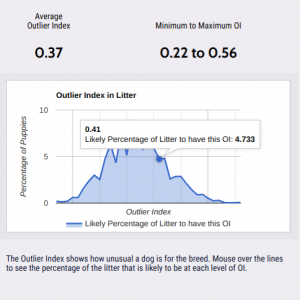 Outlier Index (OI): The predicted range of this litter is .22 to .56, so puppies could fall anywhere from far below breed average to well above it. The lower this number, the closer one might be breeding toward a potential bottleneck within a breed. The variation in predicted values is because each offspring will receive different genetics from the sire and dam. Each sire and dam has common, neutral, and uncommon genetics in comparison to the rest of the breed. The current breed average OI for Shibas is .41, but this will change as more of the population is sampled. The average for this breeding is .37, which is slightly below breed average. The percentage of puppies falling above breed average appears to be about a third of the litter (as seen to the left); you can see in the image to the left that 4.733% of the likely litter would fall at .41 wh
Outlier Index (OI): The predicted range of this litter is .22 to .56, so puppies could fall anywhere from far below breed average to well above it. The lower this number, the closer one might be breeding toward a potential bottleneck within a breed. The variation in predicted values is because each offspring will receive different genetics from the sire and dam. Each sire and dam has common, neutral, and uncommon genetics in comparison to the rest of the breed. The current breed average OI for Shibas is .41, but this will change as more of the population is sampled. The average for this breeding is .37, which is slightly below breed average. The percentage of puppies falling above breed average appears to be about a third of the litter (as seen to the left); you can see in the image to the left that 4.733% of the likely litter would fall at .41 wh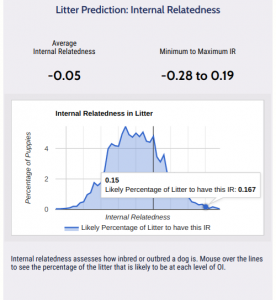 ich is breed average for Shiba Inus.
ich is breed average for Shiba Inus.
Internal Relatedness (IR): The IR range for this breeding goes from very outbred at -.28 to very inbred at .19. However, when you go to the summary, you can hover over the graph and see just how many will fall in the highly inbred range of .15 to .19. It appears that very few of this litter would fall above .15.
DLA: 100% of the puppies from this breeding will inherit common DLA haplotypes and all puppies will be homozygous for those DLA haplotypes.
A Look at Another Litter
This third breeding has taken place and has puppies on the ground from it (puppies pictured as the cover of this blog)! We are going to look at the test breeding and discuss the three major points.
The Key Points
Outlier Index (OI): The predicted range of this litter is .14 to .44, so puppies could fall anywhere from far below breed average to just above it. The lower this number, the closer one might be breeding toward a potential bottleneck within a breed. The variation in predicted values is because each offspring will receive different genetics from the sire and dam. Each sire and dam has common, neutral, and uncommon genetics in comparison to the rest of the breed. The current breed average OI for Shibas is .41, but this will change as more of the population is sampled. The average for this breeding is .27, which is well below breed average. The percentage of puppies falling above breed average appears to be almost none of the litter (as seen to the left in the image above), as .4% will likely be .41 (breed average for Shibas). However, we will know more about what genes are most typical in the Shiba population as more Shibas are tested.
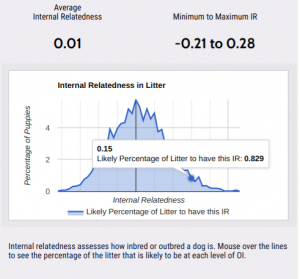
Internal Relatedness (IR): The IR range for this breeding goes from very outbred at -.21 to very inbred at .28. When you go to the summary, you can hover over the graph and see just how many will fall in the highly inbred range of .15 to .19. It appears that very few of this litter would fall above .15. However, a significant portion will fall at an intermediate inbreeding level of .9 to .14 (as seen to the right).
DLA: 100% of the puppies from this breeding will inherit common DLA haplotypes and all puppies will be heterozygous for those DLA haplotypes. You can see the predicted litter DLA haplotypes in the image below from the litter analysis.
All in all it looks like this breeding was a nice outbred litter with heterozygous DLA haplotypes, but OI averages well below breed average. This will be easy to raise in the next generation as the Shiba population thus far tested has had well distributed genetics and a high breed average Outlier Index.
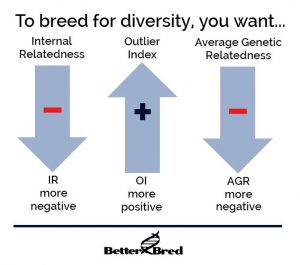 Conclusion
Conclusion
We hope you enjoyed our test breeding demonstrations! Since the Shiba Inu is a relatively healthy breed, randomly breeding with its diversity relatively well distributed, we recommend breeders test their dogs and continue this trend! Breed for IR at or below zero and OI at or above breed average. When all else is equal, take note of atypical DLA haplotypes and make an effort to redistribute those that are poorly represented.
Want this for your breed? Learn more about how to Enroll Your Breed here.
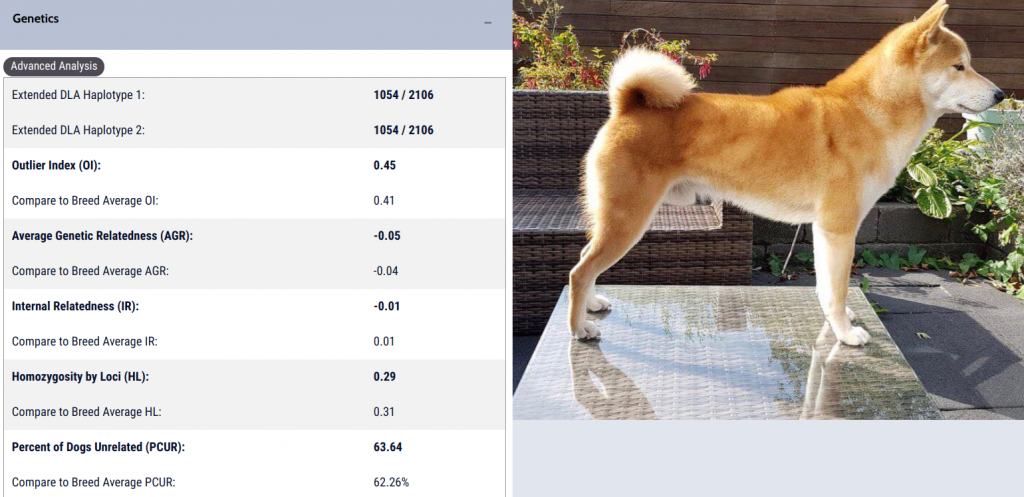
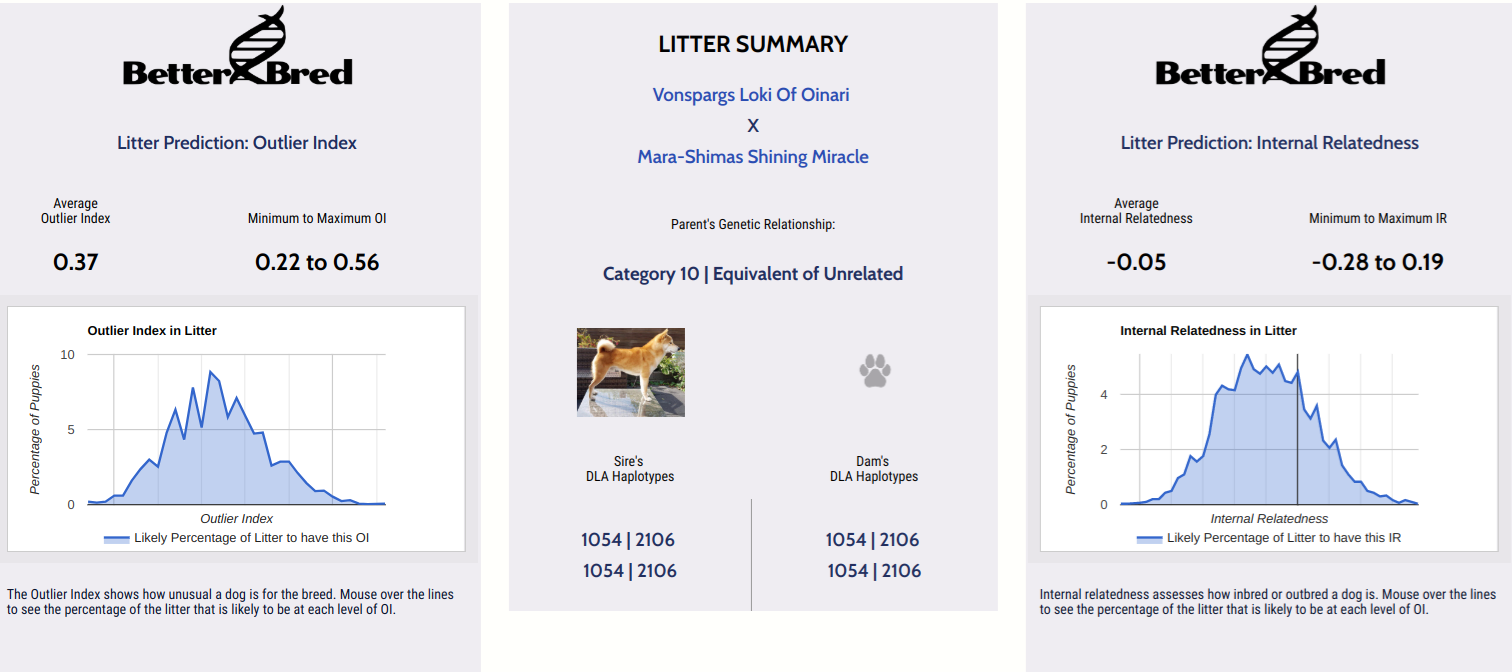
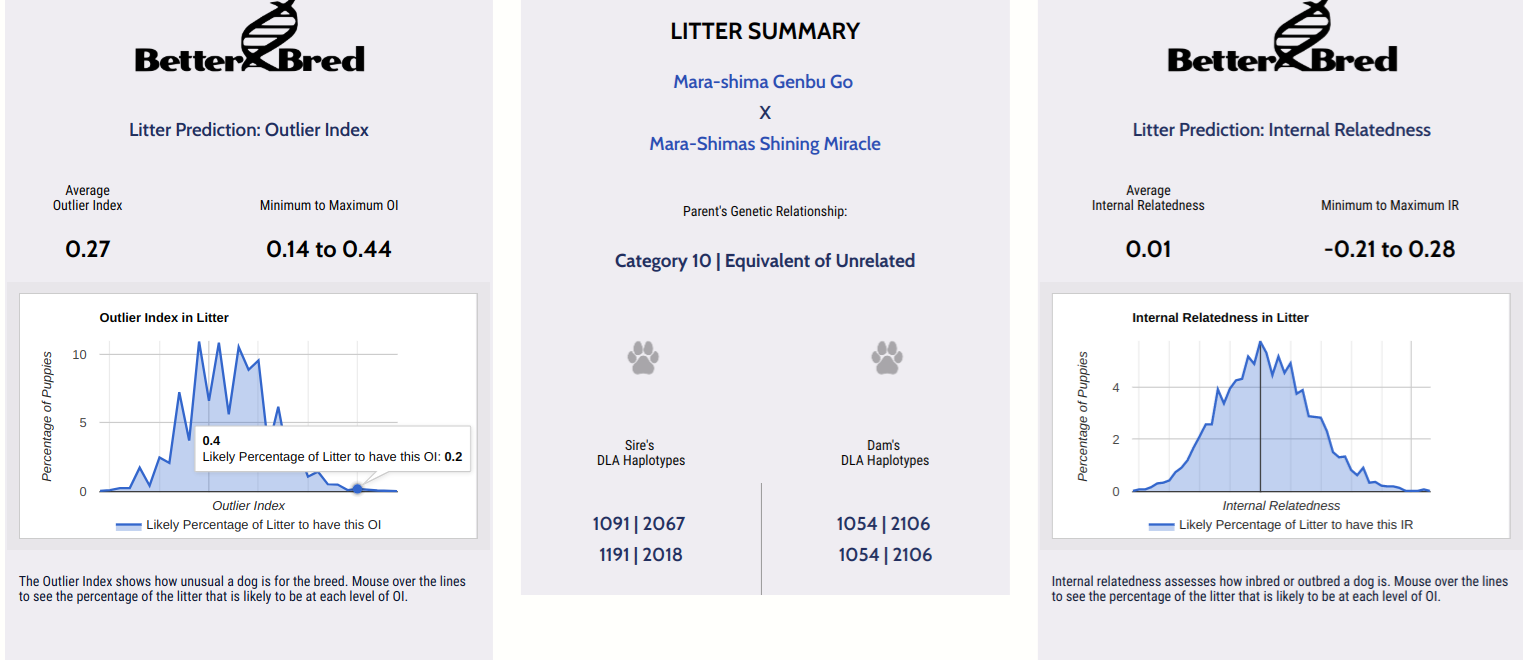

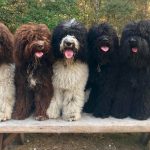 Previous Post
Previous Post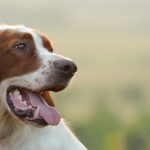 Next Post
Next Post


